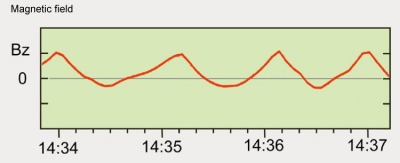Grigg-Skjellerup
A series of three small orbital corrections ensured that it would return to Earth almost exactly five years after launch. On 2 April 1986, the spacecraft was placed into hibernation in the hope that it could be successfully revived and dispatched on another mission.
1419 days later, in February 1990, the signal was sent to reawaken Giotto. After such a long period without contact, controllers had no idea whether the harsh environment of space had damaged its systems. Another unknown was the direction in which the main antenna was pointing. The only hope was that an omni-directional low gain antenna would detect the wake-up signal.
Two hours later, a weak answer from Giotto was received at the NASA Deep Space Network ground station near Madrid, Spain. Within a week, full control was regained and the ESA team was able to assess its condition. Three science instruments proved fully operational, while four more were partially damaged but usable. Although the remaining three instruments, including the camera, were disabled, it was decided to redirect the sturdy little spacecraft towards a second comet.
There were five suitable comet candidates which scientists considered for the Giotto Extended Mission: Grigg-Skjellerup, Hartley-2, DuToit-Hartley, Tuttle-Giacobini-Kresak and Honda-Mrkos-Pajdusakova. In the end, Grigg-Skjellerup won out because its orbit was well-known and it was possible to reach it within two years of the Earth swing-by.
On 2 July 1990, Giotto's orbit was altered as it zipped past the Earth, just 22 730 km above the cloud tops. This was the first time a spacecraft coming from deep space had used the Earth for a gravity assist. During the flyby, observations were made of the Earth's magnetic field and energetic particle environment.
After another prolonged hibernation, Giotto's payload was switched on in the evening of 9 July 1992. The Grigg-Skjellerup flyby took place the following day, about 215 million km from Earth. Giotto crossed the bow shock and entered the dust coma about 17 000 km from the comet. Aimed directly at the nucleus, Giotto missed by a mere 100 to 200 km, eventually passing by on the night side at 15.30 GMT. It was the closest ever cometary flyby.
Results
Flyby conditions were very different from those during the Halley encounter. Since Grigg-Skjellerup would approach Giotto at an angle of 68 degrees instead of head-on, the bumper shield would afford no protection. However, with a much slower relative approach speed of 14 kms-1 (as opposed to 68 kms-1 for Halley), and a dust production rate about 1/200 that of Halley, the Comet Grigg-Skjellerup encounter was expected to cause very little dust damage to the spacecraft. And so it proved. Only three sizeable particles were detected, the largest with a mass of about 30 mg.
The eight operational experiments (including the radio science investigation) provided a surprising wealth of exciting data. Conditions inside the comet's plasma (ionised gas) cloud were also significantly different. The first cometary ions (charged particles) were detected 440 000 km from the nucleus, about 12 hours before the closest approach.
Two peaks were seen in the brightness of the coma, due to scattering of sunlight by cometary dust particles. One peak coincided with the closest approach to the nucleus. The second peak a little over one minute later remains a mystery.
Scientists were surprised when an abrupt shock wave - caused when the supersonic solar wind slammed into plasma around the comet - was detected on Giotto's outbound leg, but not clearly identified on the inward journey.
Magnetic field strength was slightly higher than at Halley, but, as predicted, no magnetic cavity was detected around the much smaller nucleus.
Strangest of all was the discovery of unusual magnetic waves, each about 1000 km apart, near the comet. Activity rose and fell over a period of about 70 seconds and increased in strength as time went by. The waves were generated by 'pick-up ions' - charged particles created from the break up of water molecules around the comet - as they moved in the magnetic field created by the solar wind.
 |
|
Unusual magnetic waves were recorded near Comet Grigg-Skjellerup by the MAG instrument. Credit: ESA, F. Neubauer et al. |
The science experiments were switched off for the last time at 03.00 GMT on 11 July. After some minor orbit manoeuvres, the spacecraft was once more shut down on 23 July 1992. There were no plans to revive it.
